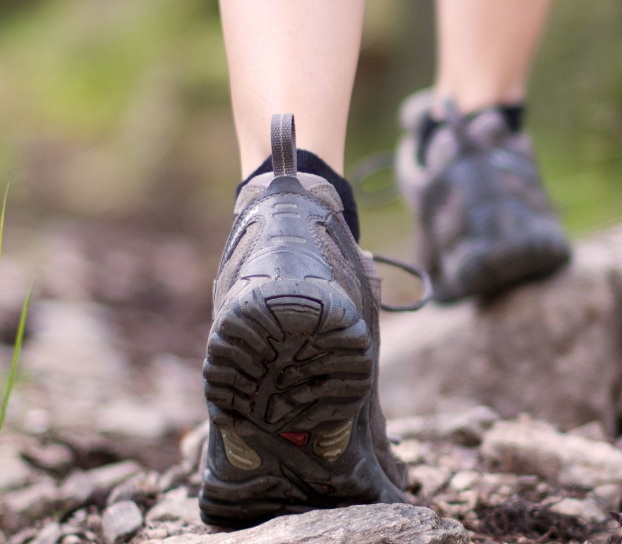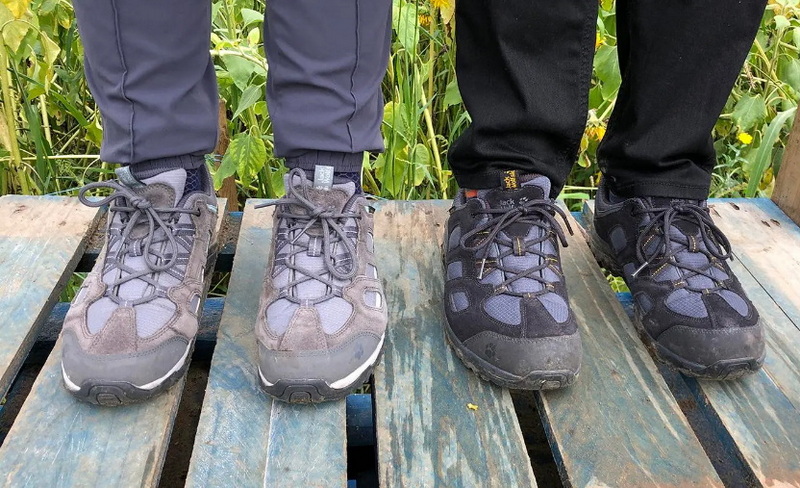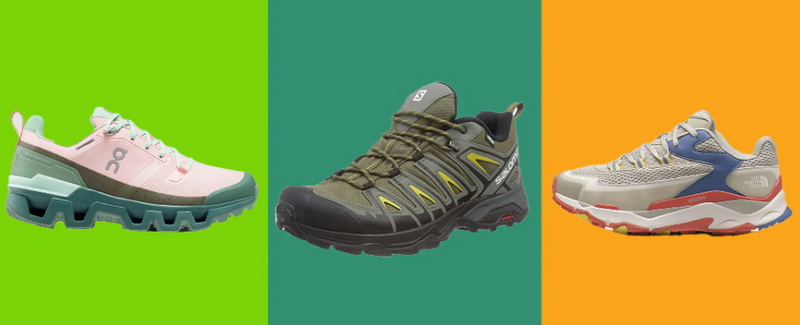Content Menu
● Introduction to Hiking Shoes
>> Types of Hiking Shoes
● Differences Between Men's and Women's Hiking Shoes
>> Foot Anatomy
>>> Key Differences in Design
>> Hiking Style and Terrain
● Importance of Gender-Specific Hiking Shoes
>> Benefits of Proper Fit
>> Choosing the Right Hiking Shoes
>>> Tips for Selection
● Popular Brands for Hiking Shoes
>> Brands Overview
● Advanced Features in Modern Hiking Shoes
>> Technology Overview
● Customization and Personalization
>> Customization Options
● Impact of Hiking on Health
>> Health Benefits
● Environmental Considerations
>> Sustainable Practices
● Conclusion
● FAQ
>> 1. What are the main differences in foot anatomy between men and women?
>> 2. Why do women's hiking shoes have deeper lugs?
>> 3. What is the significance of ankle support in hiking shoes?
>> 4. How important is trying on shoes before purchasing?
>> 5. What factors should I consider when choosing hiking shoes?
Hiking shoes are an essential component of outdoor gear, designed to provide comfort, support, and protection for hikers. While both men and women can wear the same type of hiking shoes, there are distinct differences in their design to accommodate the anatomical and physiological differences between genders. This article explores these differences, highlighting why gender-specific hiking shoes are important for a comfortable and safe hiking experience.

Introduction to Hiking Shoes
Hiking shoes are categorized into several types, including hiking boots, trail running shoes, and sandals. Each type serves different purposes, such as backpacking, day hikes, or casual walks. The choice of hiking shoes depends on factors like terrain, weather conditions, and personal preferences.
Types of Hiking Shoes
- Hiking Boots: Known for their high ankle support and rugged construction, these are ideal for challenging terrains and long hikes.
- Trail Running Shoes: Lightweight and flexible, these are perfect for faster-paced hikes on smoother trails.
- Sandals: Suitable for warm weather and water activities, offering breathability and minimal protection.
Differences Between Men's and Women's Hiking Shoes
The primary differences between men's and women's hiking shoes lie in their design to accommodate gender-specific foot anatomy and hiking styles.
Foot Anatomy
Women generally have smaller feet compared to men, but their feet are wider in the forefoot and narrower in the heel. This requires women's hiking shoes to have a narrower heel box and a wider toe box compared to men's shoes, which are typically larger and more voluminous throughout.
Key Differences in Design
- Toe Box Width: Women's shoes have a narrower toe box but are wider in the forefoot area.
- Heel Box: Women's shoes have a more compact heel box to prevent heel slippage.
- Weight and Impact: Women's shoes are designed to handle less impact due to generally lighter body weight.
- Ankle Support: Men's shoes often feature an offset ankle shaft to accommodate a less upright stance, while women's shoes tend to have a more neutral gait.
Hiking Style and Terrain
Men and women may have different hiking styles and preferences for terrain. Women might prefer lighter shoes with deeper lugs for better grip on uneven surfaces, compensating for less body weight. Men, on the other hand, might opt for more robust shoes with better ankle support for heavier backpacks or more challenging terrains.

Importance of Gender-Specific Hiking Shoes
Using gender-specific hiking shoes can significantly enhance the hiking experience by providing better fit, comfort, and support.
Benefits of Proper Fit
- Reduced Fatigue: A well-fitting shoe reduces strain on the foot and ankle.
- Prevents Injuries: Proper support and cushioning help prevent blisters and ankle sprains.
- Improved Performance: Comfortable shoes allow for more efficient hiking.
Choosing the Right Hiking Shoes
When selecting hiking shoes, consider factors such as foot type, hiking terrain, and personal comfort preferences.
Tips for Selection
1. Try Before You Buy: Ensure the shoes fit well and feel comfortable.
2. Consider Terrain: Choose shoes suitable for your hiking environment.
3. Weight and Support: Balance weight with the level of support needed.
4. Breathability and Waterproofing: Consider the weather conditions you will be hiking in.
5. Durability: Assess the quality and durability of the materials used.
Popular Brands for Hiking Shoes
Several brands are renowned for their high-quality hiking shoes, catering to both men and women.
Brands Overview
- Salomon: Known for their lightweight and agile designs.
- Merrell: Offers a wide range of hiking shoes with excellent support.
- KEEN: Provides durable and comfortable options with a focus on sustainability.
- The North Face: Offers a variety of styles with advanced technology for superior performance.
Advanced Features in Modern Hiking Shoes
Modern hiking shoes often incorporate advanced features to enhance performance and comfort.
Technology Overview
- Grip and Traction: Deep lugs and specialized tread patterns improve grip on various surfaces.
- Cushioning and Support: Advanced midsoles provide superior cushioning and arch support.
- Waterproofing and Breathability: Membranes like Gore-Tex ensure dry feet while allowing moisture to escape.
- Sustainability: Many brands now focus on eco-friendly materials and production processes.
Customization and Personalization
Some brands offer customization options to fit individual preferences and needs.
Customization Options
- Orthotics and Insoles: Custom insoles can provide additional support and comfort.
- Color and Style: Some brands allow for personalized color schemes and designs.
- Fit Adjustments: Some shoes offer adjustable features to ensure a perfect fit.
Impact of Hiking on Health
Hiking is not only a recreational activity but also offers numerous health benefits.
Health Benefits
- Physical Fitness: Hiking improves cardiovascular health and strengthens muscles.
- Mental Health: Being in nature can reduce stress and improve mood.
- Social Benefits: Hiking can be a social activity, promoting interaction and community building.
Environmental Considerations
When choosing hiking shoes, it's important to consider their environmental impact.
Sustainable Practices
- Eco-Friendly Materials: Look for shoes made from recycled or sustainable materials.
- End-of-Life Recycling: Some brands offer recycling programs for old shoes.
- Minimal Packaging: Opt for brands that reduce packaging waste.
Conclusion
In conclusion, men's and women's hiking shoes are designed differently to accommodate anatomical and physiological differences between genders. Understanding these differences can help hikers choose the right shoes for a more enjoyable and safe hiking experience. Whether you're a seasoned hiker or just starting out, selecting the appropriate hiking shoes can make a significant difference in your overall hiking experience.

FAQ
1. What are the main differences in foot anatomy between men and women?
Men generally have larger feet with a similar width throughout, while women have smaller feet that are wider in the forefoot and narrower in the heel.
2. Why do women's hiking shoes have deeper lugs?
Women's shoes often feature deeper lugs to provide better grip, as women typically weigh less and may not press as deeply into the ground.
3. What is the significance of ankle support in hiking shoes?
Ankle support is crucial for stability, especially on uneven terrain. Men's shoes may have an offset ankle shaft to accommodate a less upright stance, while women's shoes tend to have a more neutral design.
4. How important is trying on shoes before purchasing?
Trying on shoes is essential to ensure a proper fit, as this can significantly impact comfort and performance during hikes.
5. What factors should I consider when choosing hiking shoes?
Consider factors such as foot type, hiking terrain, personal comfort preferences, and the weight of any backpack you plan to carry.

















